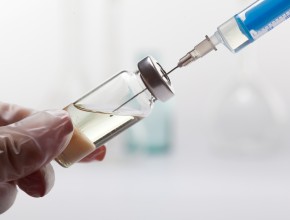Clarithromycin-naproxen-oseltamivir combination in treatment of influenza
Survival of hospitalized patients with influenza may be improved by 2-day use of clarithromycin and naproxen in addition to the standard 5-day course of oseltamivir.
In this preliminary nonblinded study conducted in Hong-Kong, all 217 patients hospitalized with laboratory-confirmed influenza A (H3N2) were treated with a 5-day course of oseltamivir (75 mg orally, twice daily). In addition, some were randomly assigned to receive a combination of 500 mg clarithromycin and 200 mg naproxen for 2 days. Of note, additional interventions in all patients included amoxicillin/clavulanate 1 g twice daily for 5 days as empiric treatment of community-acquired pneumonia and esomeprazole 20 mg daily for gastropathy prevention.
The median age of patients was around 80 years. During the 30-day observation, there were 9 deaths in the control group and 1 death in the combination treatment group. The clinical assessment of pneumonia severity was better in the combination treatment group, similarly to biochemical reduction in virus titers.
The confidence in those promising and dramatic results is tempered by the very small number of events (10 deaths in total).
CABG: On-bypass vs off-bypass surgery
Five-year survival of patients who were treated with on-pump coronary-artery bypass grafting (CABG) is better than in those whose CABG was done off-pump.
Coronary bypass surgery may be performed with patients on a cardiopulmonary bypass (on bypass) or without such a bypass (off bypass, on a beating heart). The relative value of those surgeries is still debated.
In this study, the authors report a 5-year follow-up of over 2200 patients randomized to off-bypass or on-bypass surgery. The rate of death was higher in the off-bypass group (15.2% vs 11.9%; relative risk [RR], 1.28; 95% confidence interval [CI], 1.03-1.58). Similarly, the rate of major adverse cardiovascular events was also higher in the off-bypass group (31.0% vs 27.1%; RR, 1.14; 95% CI, 1.00-1.30).
The authors conclude that under most circumstances off-pump CABG does not offer any noticeable advantages over on-pump surgery.
Tocilizumab in giant cell arteritis
In patients with giant cell arteritis (GCA), the use of tocilizumab, an interlukin-6-receptor alpha inhibitor, resulted in an over 50% steroid-free remission rate at one year.
Over 250 patients with GCA received 162 mg of subcutaneous tocilizumab weekly or biweekly combined with a 26-week-long attempt to taper prednisone dose or placebo combined with an attempt to taper the dose of steroids over 26 or 52 weeks.
At the end of 52 weeks of therapy over 50% of patients in either tocilizumab group were in steroid-free remission in comparison with less than 20% of patients in either control group. The use of tocilizumab was associated with an about 50% lower cumulative dose of steroids over the course of a year. Serious infections occurred in 7% and 4% of patients in tocilizumab groups versus 4% and 12% among placebo groups. Longer-term consequences of this therapy are not known.
 English
English
 Español
Español
 українська
українська








